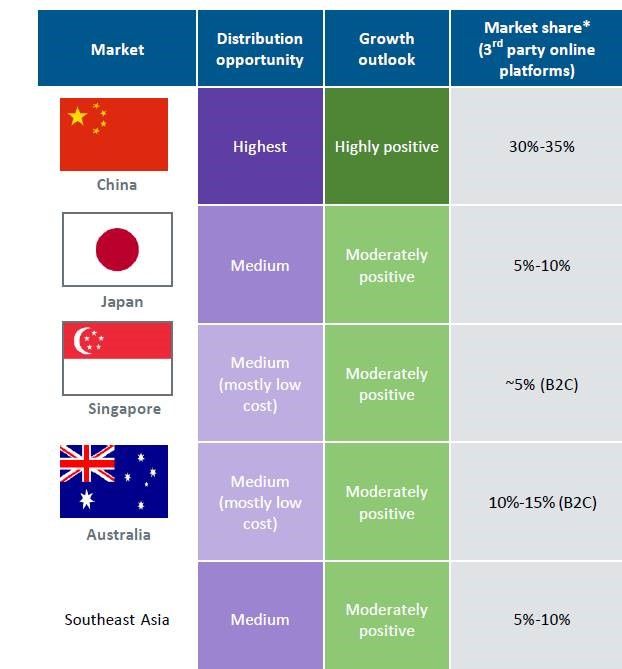By 2027, around 21% of mutual funds in the Asia Pacific region will be distributed through third-party online platforms, Broadridge Financial Solutions estimates show.
This amounts to $2.2trn compared with $1trn in 2022 or a market share of 17% currently.
In the latest edition of Broadridge’s Apac distribution 360 report, China remains at the forefront of online fund distribution in the region, with about 30%-35% of funds distributed via digital channels.
It is followed by Australia, where around 10%-15% of funds sold are through business-to-consumer online platforms, while other regions’ digitally-distributed funds constitute around 5%-10% of the market.

Third-party online platforms refer to independent platforms backed by third-party technology providers and excludes online distribution intermediated directly by banking channels.
They range from B2C platforms to online brokerages and different platforms dominate in different markets across the Apac region.
Amid tighter regulations, B2C platforms dominate online distribution, while banks and securities firms play catch-up via open architecture wealth platforms and retail advisory services.
The largest online distributer is Ant Financial, which provides artificial intelligence-based operational and sales support for fund firms.
For global managers to cater to the growing needs of these online platforms, they have to apply more resources to online and mobile marketing, brand building and investor education, said Broadridge.
For example, foreign firms have to set up an official home page in Mandarin or set up an official WeChat account.
“Global managers need to establish more effective marketing and communication tools to reach potential investors as mobile apps are the most common mode for fund buying,” said Evonne Gan, engagement manager at Broadridge’s asset management advisory division and lead author of the D360 APAC report.
“This allows managers to establish direct contact with end-investors to facilitate better communication.”
Against this backdrop, while banks still lead third-party distribution overall in China, their market share has steadily declined since the first quarter of 2022 when the Asset Management Association of China started releasing detailed distribution data. In fact, banks have suffered declines in market share – measured by non-money market fund assets – through the previous seven quarters, down from 58% in the first quarter of 2021 to 47% recorded in the third quarter of 2022.
In other parts of the region, other markets are seen playing catch up in digital distribution.
Despite being one of the more conservative markets in Apac, online distribution has also begun to gain traction in Japan since 2020 and stands at around 5%-10% of the assets distributed in 2022.
It is boosted by younger investors seeking convenience and cost savings and major financial conglomerates are taking stakes in online brokerages in Japan.
“Such platforms allow end-investors to purchase fund products directly, regularly and more conveniently at a lower cost,” said Broadridge in its report.
Broadridge believes the trend of buying funds online is likely to continue to change the industry, for instance, online platform SBI Securities has even overtaken Nomura Securities in terms of account numbers.
“This has become a huge challenge for bricks-and-mortar distributors in Japan as online traders offer lower commission fees,” said Gan.
To step up their game, Broadridge has observed that asset managers across the region are increasing their digital distribution presence by acquiring digital platforms, building proprietary online platforms or partnering with digital investment services providers.

















